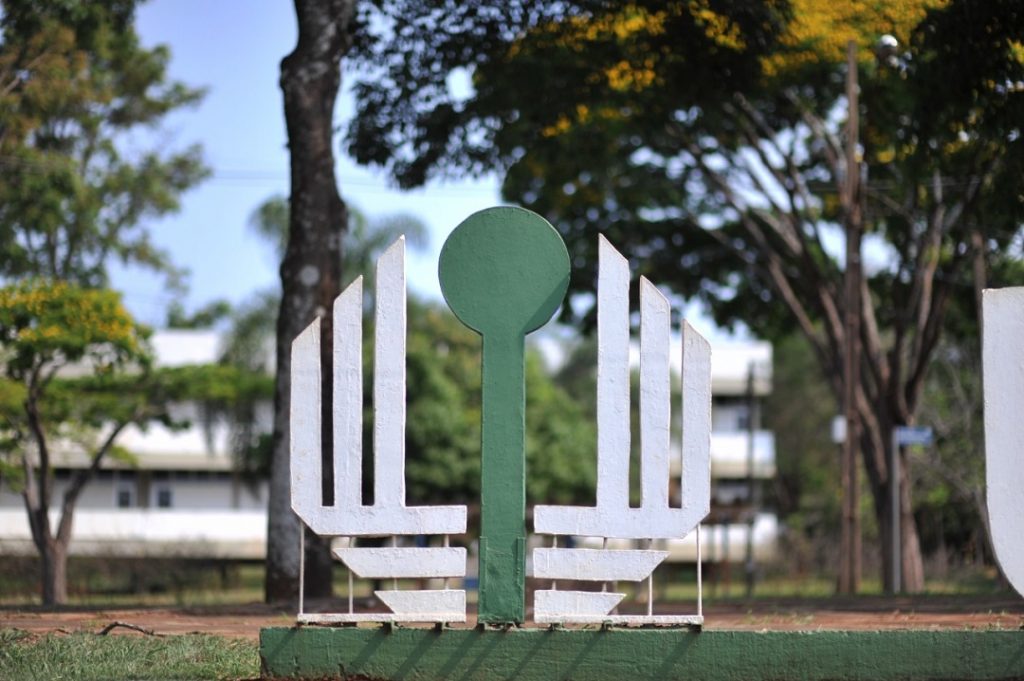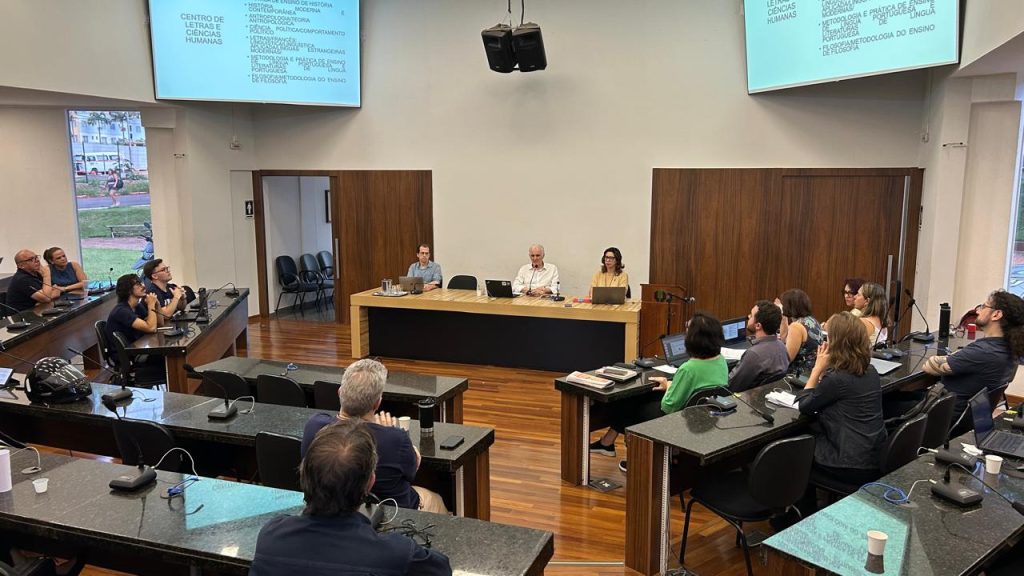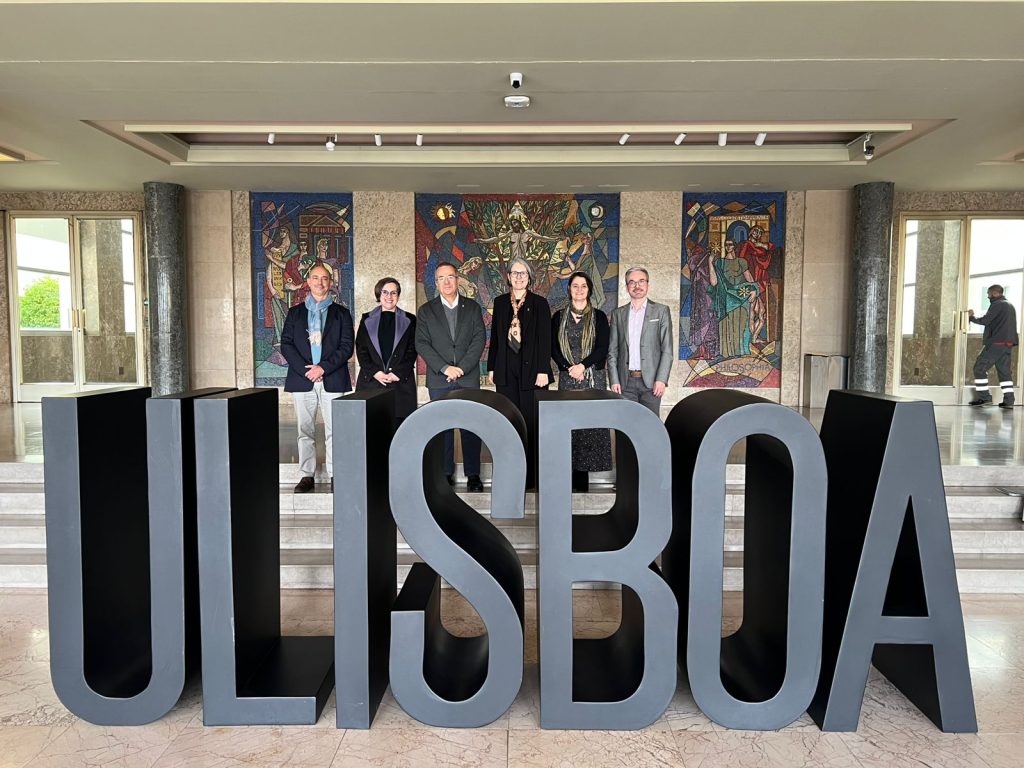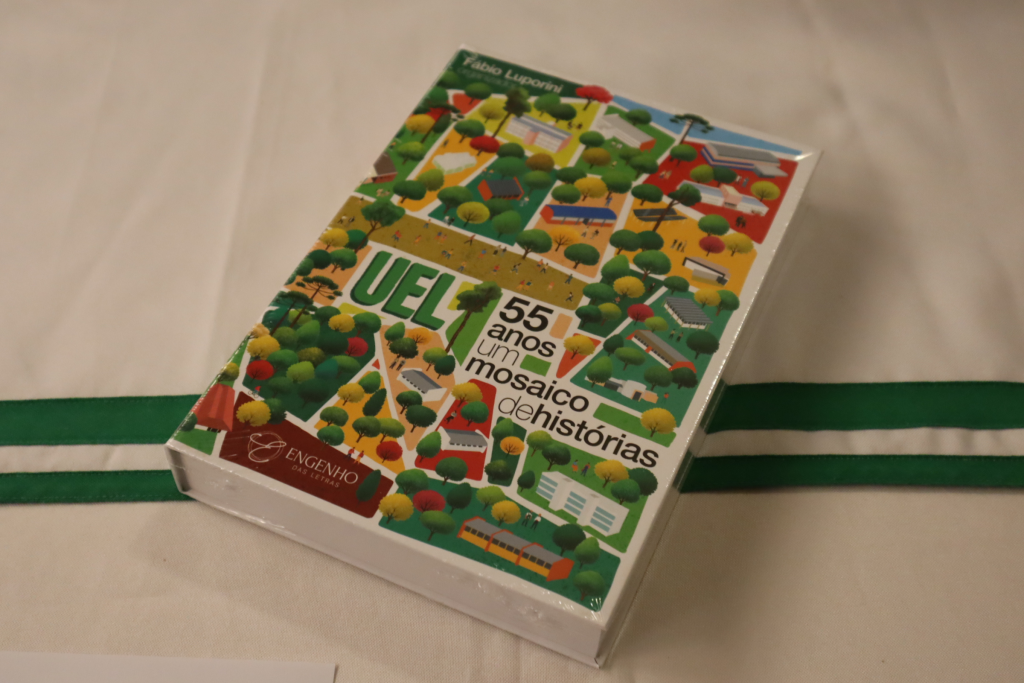[EN] The “Brazilian Way” in World War II
[EN] The “Brazilian Way” in World War II
Matéria originalmente publicada em português, na edição nº1420 do Jornal Notícia. Traduzida pela equipe do Programa Paraná Fala Inglês (PFI).Professor Francisco Cesar Alves Ferraz, from the History Department at the Study Center for Languages and the Humanities (CLCH), has been developing several research projects on World War II over the past 15 years, linked to CNPq (National Council for Scientific and Technological Development), with a productivity grant (recently renewed), or other funding and resources.
The professor is currently coordenating the project “Brazilian Participation in World War II and its Political Consequences (1940-1955)”, which aims to understand the political dimensions of Brazil’s presence, specifically the Brazilian Expeditionary Force (FEB), in the conflict as an ally of the United States. The research focuses on both the internal aspects and the disputes among social groups, parties, and institutions, as well as the external aspects, including the country’s diplomatic relations with the countries on both sides of the war. The study goes back as far as 1955 but extends into the early years of the military government, which began in 1964.
The research included two trips: the first with six undergraduate students to the archives in Rio de Janeiro, and another, alone, to Washington, in search for documents on Brazilian politics from 1920 to 1964, available on microfilm at the US State Department archive. The professor gives an idea of the volume of data: for the year 1944 alone, there were 88 rolls of microfilm, each containing 750 images. It took six days of work and approximately 6,300 images captured by the professor.
According to the researcher, it is a collaborative effort involving the State University of Maringá (UEM), the Federal University of Paraná (UFPR), and Brown University, in Rhode Island, (USA). Brown University, in fact, has a repository of information on diplomatic relations between the USA and Brazil called “Opening the Archives,” in a joint initiative with UEM.

“Estado Novo”
When World War II broke out in September 1939, Brazil was under the Estado Novo regime, which was the dictatorship of Getúlio Vargas. The Congress had been closed, political parties were dissolved, and the president had the support of the military. There was, however, an atmosphere of imminent war, and world powers seemed to be preparing for a conflict. At the same time, there was a strong anti-communist propaganda, which intensified even further after the war.
According to Professor Francisco Ferraz, Brazil had very little to offer during that time, except for products such as sugar, rubber, cocoa, and iron, among others. At that time, Germany was a commercial partner with an aggressive policy, competing with the Americans. There was also English dominance over the Atlantic and a closer and more threatening power rival: Argentina.
Vargas made a great effort to remain neutral, but pressure from both sides required the government to make a series of decisions. On the one hand, Brazil had the largest number of Nazi party members outside Germany, and initially, it wasn’t very interested in severing commercial ties with the European country. However, the blockades began to harm Brazil. The researcher mentions a ship loaded with German weapons from Italy, which had already been paid for but couldn’t even leave the port due to being blocked by the British navy.
On the other hand, the USA showed interest in establishing military bases in the states of Rio Grande do Norte and Paraíba due to their strategic geographical positions. For instance, Ponta do Seixas, in Paraíba, is the easternmost point of the Americas. The capital of Paraíba, João Pessoa, is 1000km closer to Africa than it is from Porto Alegre, the capital of a Brazilian state in the south of the country.
Ultimately, Vargas’ neutrality lasted until the attack on Pearl Harbor in the American state of Hawaii in December 1941. The following month, a conference of continental chancellors was held in Rio de Janeiro to define the countries’ positions regarding the war. “Argentina and Chile did not join,” Professor Francisco explains. According to Ferraz, Brazil’s decision was influenced by political and economic aspects, as well as popular pressure.
The Americans set up their base in Rio Grande do Norte, which earned the nickname “Trampoline to Victory.” As a result, Brazil had some advantages, such as the arrival of Coca-Cola to serve the soldiers accustomed to consuming the beverage. Additionally, Hollywood stars like Humphrey Bogart, along with actors, producers, singers, and musicians, visited the troops in the area.
Brazil goes to war
In Brazil, the Estado Novo regime continued with parties only operating clandestinely, such as the communist party, which in 1943 held the Mantiqueira Conference in the interior of Rio de Janeiro, bringing together affiliates from eight states and the Federal District, determined to pressure Brazil against Nazism. Before this, another important conference brought together Vargas and President Franklin Roosevelt in Natal (RN) aboard a destroyer docked in the city. It was there that agreements were made to create the Brazilian Expeditionary Force (FEB) and, in return, secure resources for the consolidation of the National Steel Company (CSN). Brazil also committed to providing rubber and other resources from the Amazon. Meanwhile, Argentina remained the only country in the continent to officially remain neutral.
Once the decision was made for Brazil to send troops to the war, voluntary enlistment was opened. There were approximately 2.5 million men of military age in the country.
Just over 0.1% of this contingent volunteered, and many were rejected during examinations. The solution was compulsory conscription, and initially, Brazil intended to send stronger and better educated soldiers, which at the time meant sending young men from upper-middle or upper-class families. As a result, many of them found a way to avoid military service, which gave rise to the expression “tirar o corpo fora” (literally “to take the body out”), meaning to avoid responsibility. So it was left to the “unlucky ones” – as Professor Francisco puts it – to go to war. According to him, Brazil sent around 25,000 men, of whom 15,000 went into combat (or were in reserve) and 10,000 did not fight, but provided nursing, transportation, equipment maintenance or kitchen services.

Other countries did not have much faith in Brazil’s participation in the conflict, and dismissively said it would only happen “when snakes started to smoke.” Thus, the symbol of the Brazilian Expeditionary Force (FEB) was an image of snake smoking.
One of the details that caught the attention among the allied troops, according to the researcher, was that there was no racial segregation among Brazilian soldiers, quite unlike in other countries. Yes, there were isolated episodes. But in other countries it was visible, “institutionalized,” comments Francisco Ferraz. Even blood bags were different for white and black soldiers. Brazilians ate together, slept together, which amazed foreigners. Another point observed was that Brazilians shared rations and some other resources with the victims of the war, something the others did not do. Even more strange, according to the researcher, was the presence of communists in the FEB.
On the other hand, it is worth noting the presence of names like Humberto de Alencar Castelo Branco and Oswaldo Cordeiro de Farias in the Brazilian Expeditionary Force (FEB). The former was one of the Operations chiefs, while the latter was the Artillery commander. After the war, they became instructors at the Escola Superior de Guerra (ESG) and at the Escola de Comando e Estado-Maior do Exército (Eceme), both institutions are responsible for providing strategic, tactical and logistical training to officers. Farias was the interventor of Rio Grande do Sul during the Estado Novo, governor of Pernambuco, and participated in Dutra ‘s government. Castelo Branco was one of the leaders of the 1964 coup and the first president of the military regime period.
Political consequences
When the war ended in 1945, the combatants of the Brazilian Expeditionary Force (FEB), known as “pracinhas,” returned to Brazil. Not all of them: around 500 died in Italy. They found a tense political climate upon their return but were prohibited from making any type of demonstration. Worse still, they initially received no pension, psychological support, social assistance, or even healthcare. It’s worth noting that many returned maimed, blind, or with other severe injuries. Most of them were unemployable or underemployed.
The Estado Novo was in its final days. Communists had been granted amnesty by a decree issued by Vargas in April 1945. There was a play of forces at work in the country. Among the military, the soldiers were pro-Vargas, but the officers were against him. Three candidates emerged for Vargas’s succession: General Eurico Gaspar Dutra, Air Force Brigadier Eduardo Gomes, and Yeddo Fiúza from the Communist Party. Brazilians can thank Gomes for the creation of the “brigadeiro” dessert, created to support his campaign.
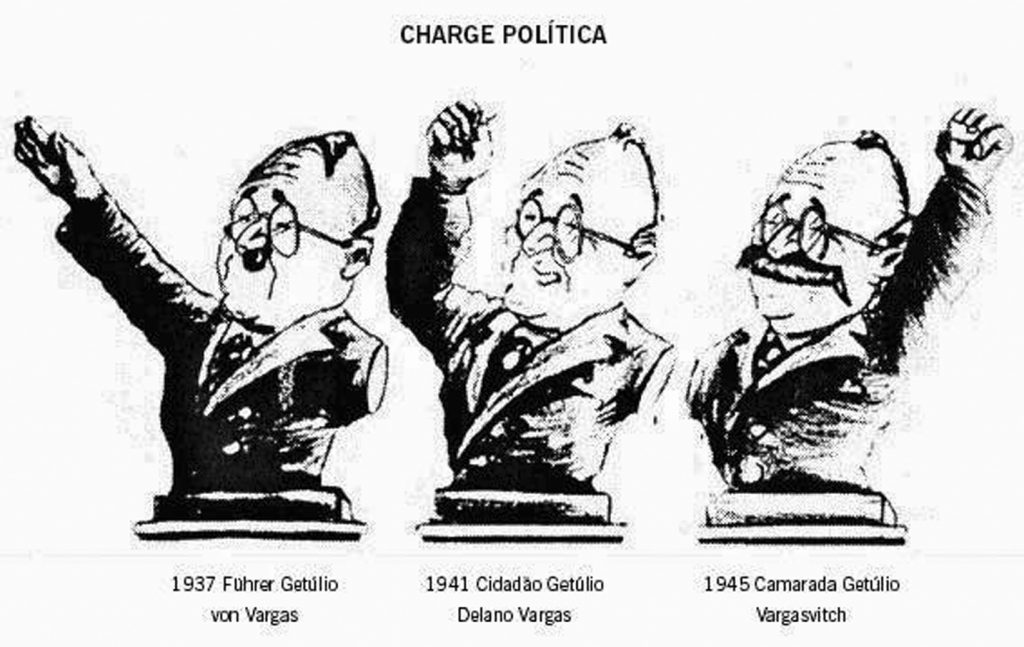
Dutra easily won the elections and marked his government by an ideological alignment with the USA during the Cold War, as well as by the persecution of labor movements and communists – those elected were impeached and relations with the Soviet Union were severed. Communists and conservatives exchanged offenses, and the military remained divided on all aspects. For example, in the “Oil is Ours” campaign, which discussed the exploitation of the resource by foreign companies.
This tension lasted throughout the 1950s and culminated in the coup of ’64. From then on, explains Professor Francisco, the “more left-wing” military personnel were persecuted by the nationalists and eventually left the scene. The consequences, according to the researcher, were an increase in power of the Armed Forces, a very positive self-image of the military, legitimacy in the eyes of the population, and a decades-long alliance with the USA, with a consequent Americanization of Brazilian culture.
Academic productions
Professor Francisco Ferraz has published three books on World War II, in 2005, 2012 (his doctoral thesis) and 2022, the latter researched with a productivity grant.
Another major work in progress is a survey of all academic production on World War II in Brazil, to create a kind of source guide. So far, the researcher has listed about 2400 works. Out of these, 100 will be summarized and, in the end, will be included in an e-book. “So far, the work is 550 pages long,” reveals Ferraz.
Tradução: Maurício Brancalhão. Revisão: Raquel Prete. Supervisão: Fernanda Machado Brener. Programa Paraná Fala Inglês (PFI).
Matéria originalmente publicada em português na edição nº 1420 do Jornal Notícia: Um “jeitinho brasileiro” na Segunda Guerra Mundial.

